
AN-3049 Radio operator's cabin light, shown from below
A wide variety of lighting sources was used in WWII aircraft, divided roughly into two areas - normal incandescent, and night vision enhancers. One "standard" aircraft cabin light was a 4.75" AN3049-1, shown above a B-29 radio operator's position. Notice the careful design of mounting hardware, highly polished reflector, and the clever use of art-deco lines and forms to ensure the greatest beauty and stress reduction for the operator...

Another cabin light in wide use was a similar 6" diameter model. These lights were also available with a frosted glass lens and ring bezel for more posh environs.

The dim light available from a fixed light in the overhead wasn't always sufficient for close work such as plotting positions, so an AN3047 adjustable neck lamp was provided to stations such as the flight engineer, radio, and radar operator, shown here.
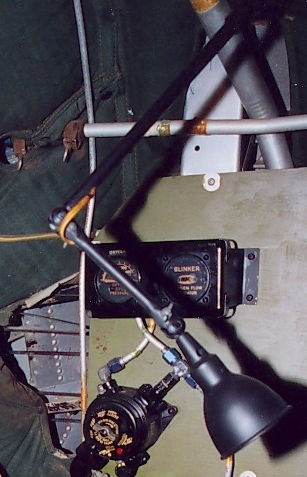

The navigator's light isn't practical for the pilot and copilot, but there were times when they needed more light than the UV lights provided. For that, there was the C-4A version shown below. Unlike the UV lights, this had an integral dimmer, a detachable red filter, and an adjustable lens to go from flood to spot by extending the concentric body and locking the thumbscrew. Curiously, I have not yet found a four digit AN type number (AN****) for this light. Even more curious, they have kept the C-4A designation for a host of lights in later years that began to look very little like this original.

There were certain areas of the aircraft which had the potential for accumulating gasoline vapors or needed special protection. For this kind of space they used a AN-3039 (A-7) type of light, shown below. In this example from a B-29 bomb bay, notice the convenient dual use of the bracket for an interphone station!
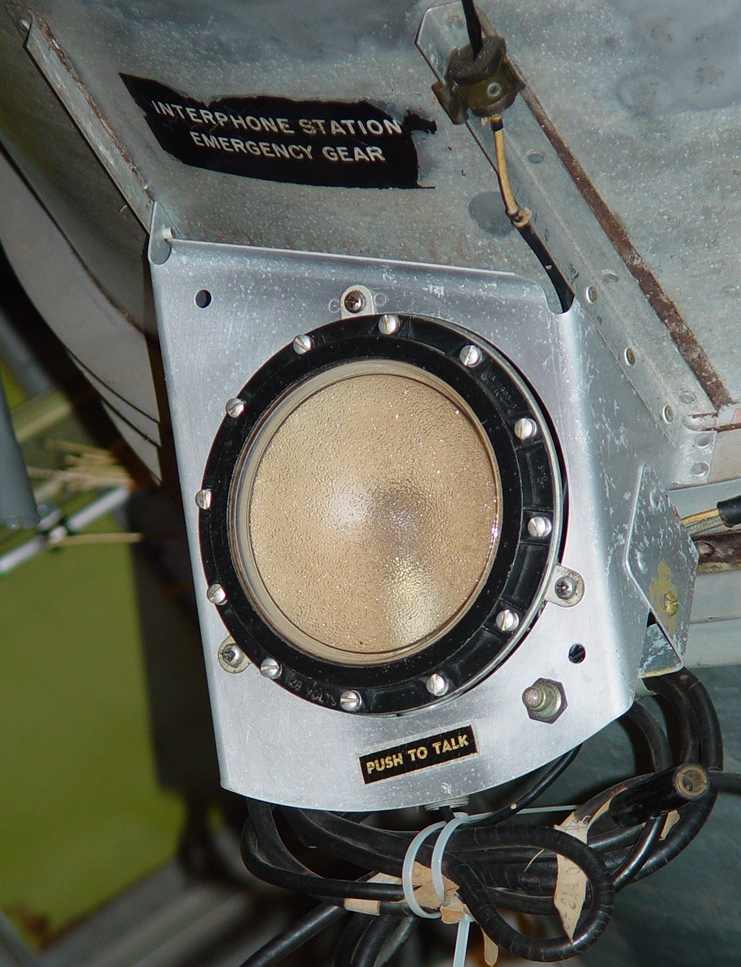
Okay, so there were no psychedelic UV posters back then, but night vision was a critical issue for the flight crew. There were a number of special lamps used throughout the war for the purpose of reading instruments, all based on exciting the photoluminescent paint used for the instruments through the use of ultraviolet light. The availability of power throughout the airframe minimized the necessity for radium excited dial paint, though it was inexplicably used on the odd instrument, like the "tune for max" meter in the common Bendix ADF radio control boxes and certain radar instruments.
Earlier in the war the practice was to use 6" fluorescent lamps operating at 115VAC 400 or 800Hz to provide this lighting - two examples shown below. The Navy seems to have had the greatest variety of these fixtures, mostly on goosenecks. The AAC/AAF appeared to settle on the C-1 below, for a fixed location, though it did have a gooseneck variant as well. The B-24 bomber had one on each side of the cockpit to flood the pilot and copilot's instruments. The disadvantage of these lights was an inability to cover the entire instrument panel at the same intensity, and they needed an AC voltage source, as well as a separate heavy transformer/ballast.

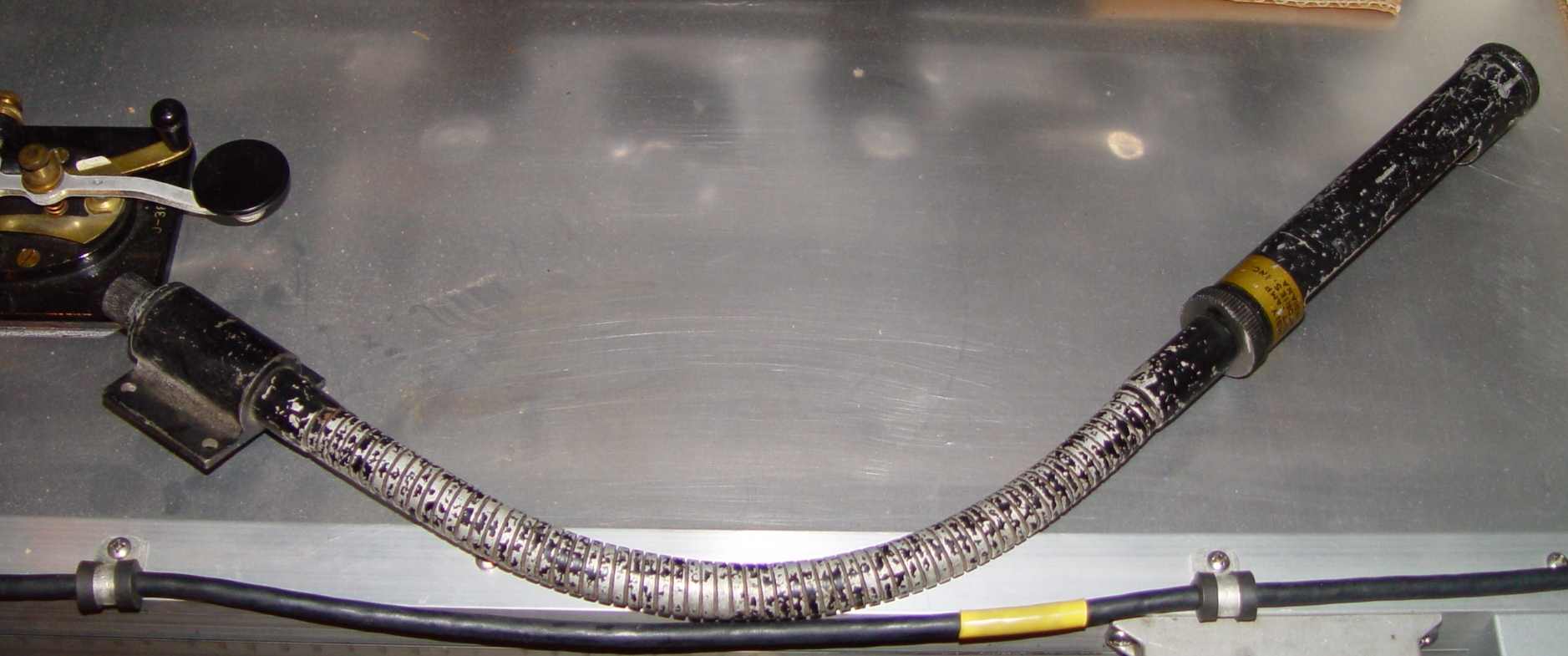
As a result of the disadvantages in the AC designs, the Services gradually turned to a variable intensity spotlight design (labeled as the C-5, with the A/N type number AN3038) that used only 28 volts DC, mounted in a lampholder that looks pretty familiar to most pilots today. There were two variants of this holder - one with an opaque UV lens, and one with a butterfly opening on the front lens that allowed the user to introduce white light when necessary. Up front with the bombardier, these were used with specially prepared bombing tables printed in luminescent ink to avoid destroying night vision. The challenge of the C-5 to the military collector is that it requires a unique integral start/run rheostat and switch combination (Grimes A-2334A and NAF 48379-5) mounted externally to the lamp assembly, and the special lamp itself hasn't been made in decades. Fortunately, they do last a very long time if not turned up to maximum brilliance.
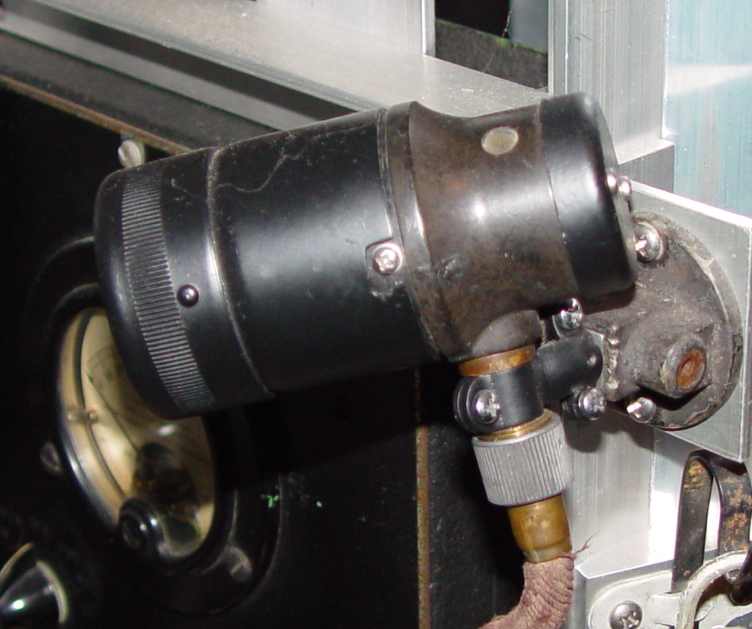
Another one of the UV lights that began to be used by the end of the war was the B-1 shown below. Like the C-5, it used 28vdc and required a separate starter switch/dimmer control, but was a natural development of the operational fact that once pointed at an instrument cluster, the C-5 was seldom adjusted to any other direction. This has the ability to be adjusted in one dimension by turning the collar on the end. In a sense, it is a cross between the C-1 and C-5 design concepts.
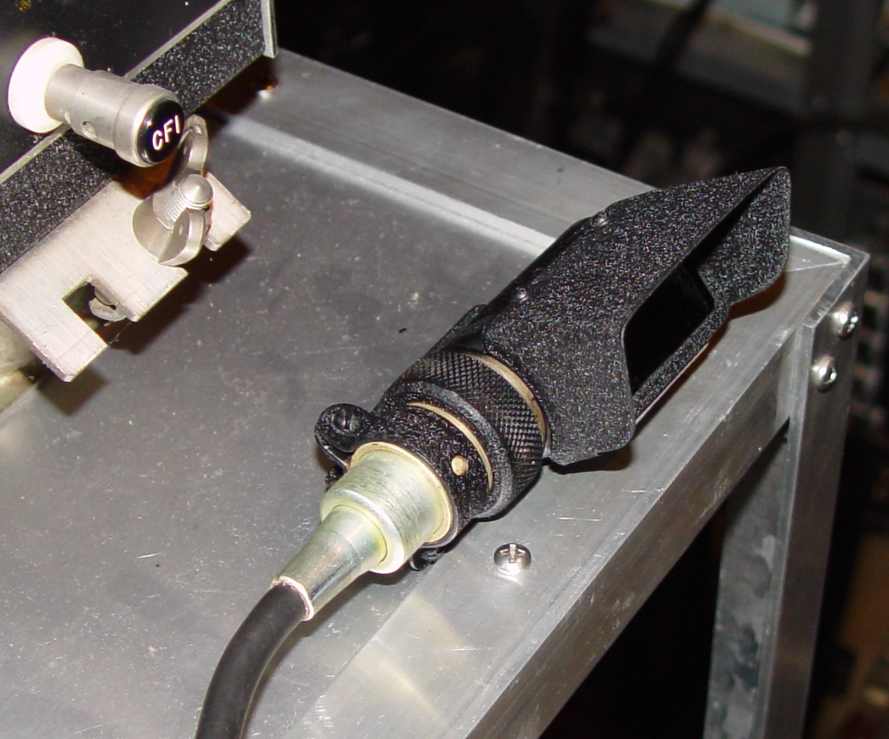
The fly in the ointment with these variable intensity sources is the need for a rheostat that provides three things in one package - a variable resistance, a fixed current limiting resistance, and a momentary contact to energize the warm-up filament with current limited 28 volts for a few seconds. It also requires finding a place to mount the bloody thing! Below is the standard rheostat used with these 28 volt lights. As you can see, the mounting method and location is left as an exercise for the student.
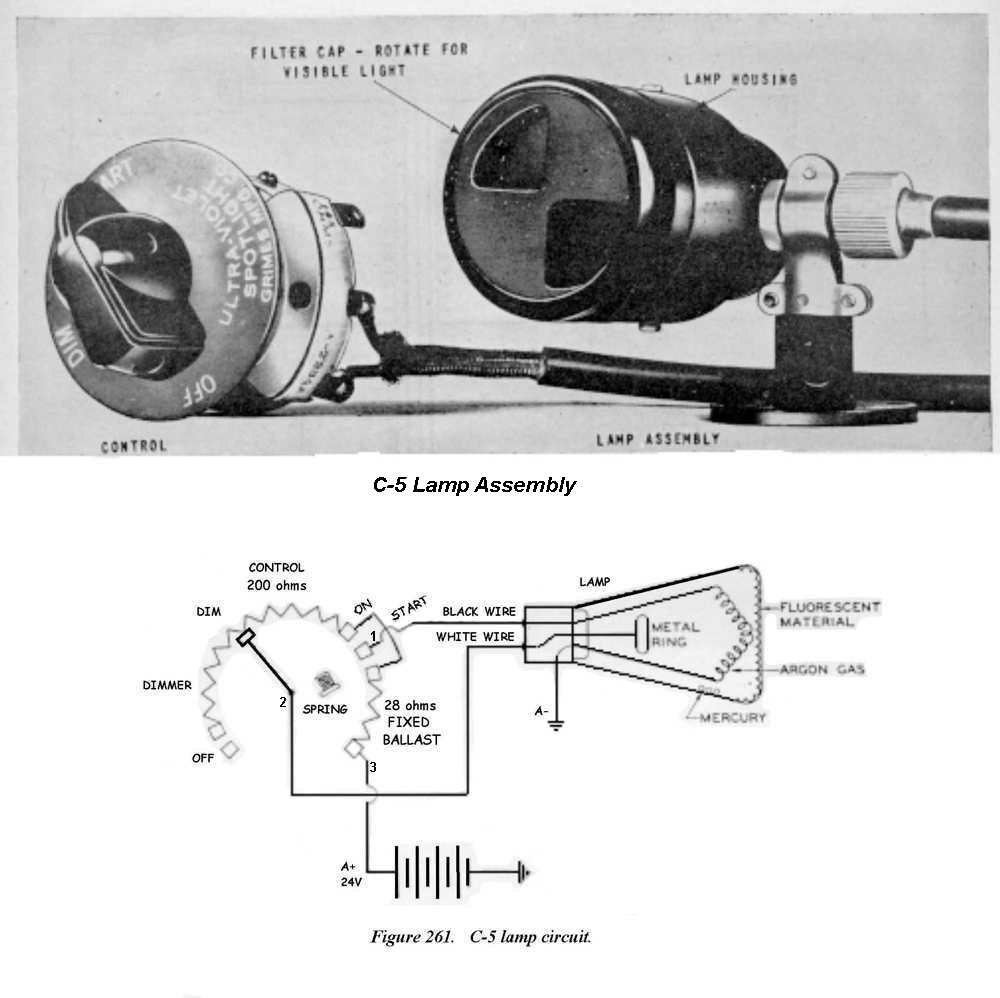
The placement of the rheostats ran the gamut of nooks and crannies in the aircraft, and association with a specific light was not always obvious for a crewmember who was new to the aircraft. Below is one straightforward way of providing an obvious visual connection.
